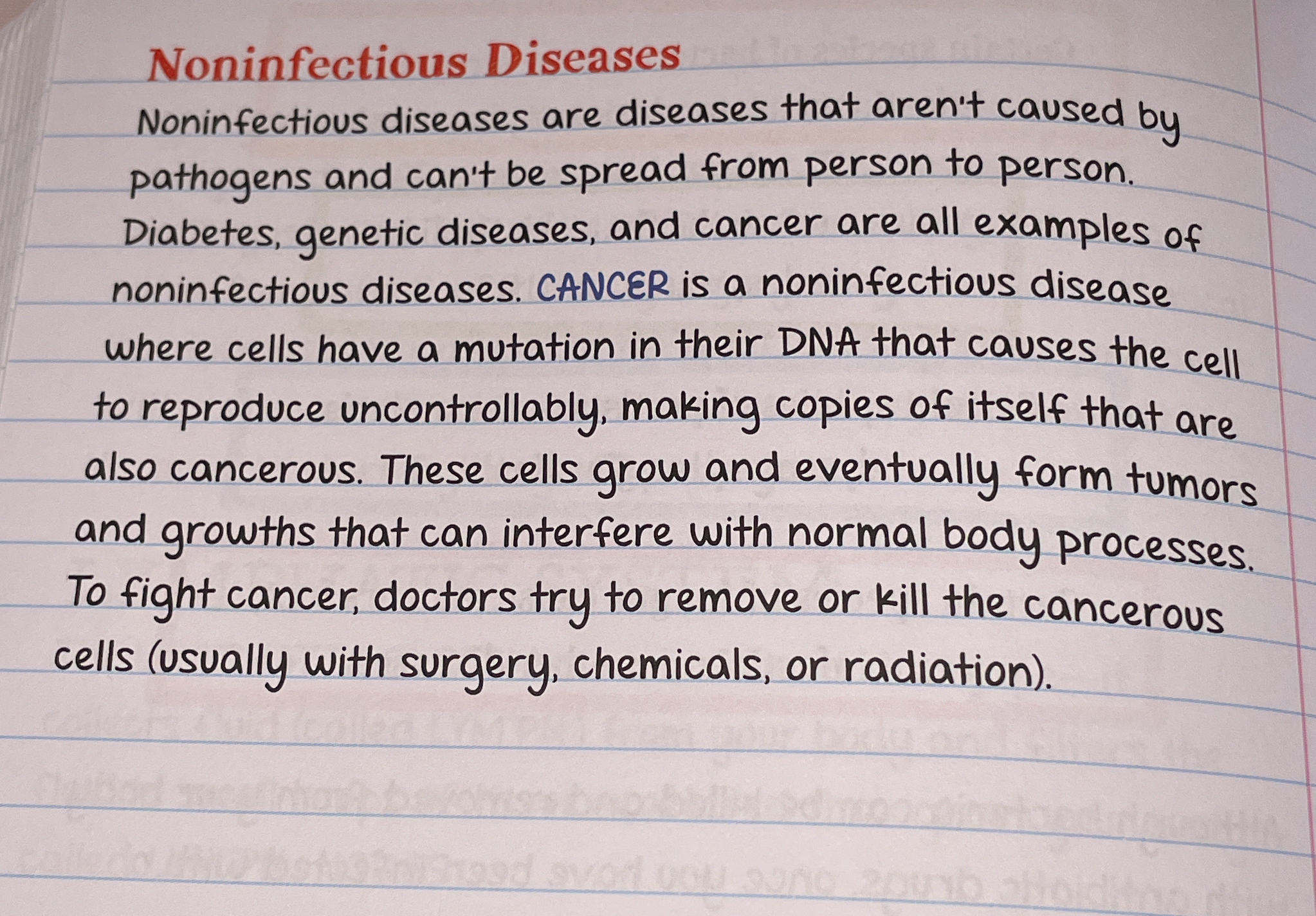What are noninfectious diseases, and how does cancer develop?

Understand the Problem
The text provides information about noninfectious diseases, particularly focusing on cancer and how it arises from mutations in the DNA of cells. It explains the nature of noninfectious diseases and the methods used to combat cancerous cells.
Answer
Noninfectious diseases aren't caused by pathogens and include cancer, which arises from DNA mutations leading to uncontrolled cell growth.
Noninfectious diseases aren't caused by pathogens and aren't contagious. Examples include diabetes, genetic diseases, and cancer. Cancer arises from DNA mutations leading to uncontrolled cell growth, forming tumors. Treatments involve removing or killing cancerous cells via surgery, chemicals, or radiation.
Answer for screen readers
Noninfectious diseases aren't caused by pathogens and aren't contagious. Examples include diabetes, genetic diseases, and cancer. Cancer arises from DNA mutations leading to uncontrolled cell growth, forming tumors. Treatments involve removing or killing cancerous cells via surgery, chemicals, or radiation.
More Information
Noninfectious diseases are often chronic and arise from a mix of genetic, environmental, and lifestyle factors. Cancer develops when cell mutations cause uncontrolled growth, potentially affecting normal body processes.
Tips
A common mistake is assuming all cancers are infectious; this is only true for a small percentage linked to pathogens.
Sources
- Noninfectious Diseases - CK-12 - ck12.org
- Cancer | NCDs - EMRO - emro.who.int
- Noninfectious Diseases | CK-12 Foundation - flexbooks.ck12.org
AI-generated content may contain errors. Please verify critical information